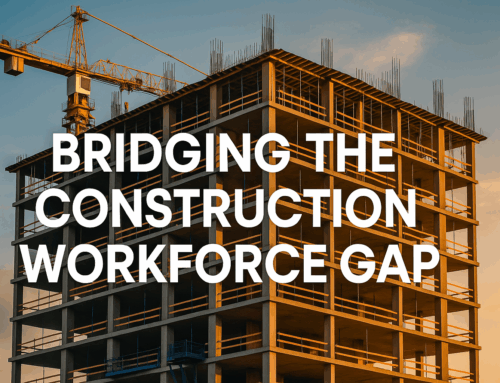It’s important to understand the differences between onboarding and orientation. Although orientation is a significant part of the hiring process, onboarding is much more complex because it promotes an emotional connection between employees and your company, while enabling them to become productive team members. Further, an effective onboarding process should accomplish these goals: familiarizing employees with work culture and organizational processes, employee engagement and retention. Let’s review some of the best practices for onboarding construction talent.
Prepare
Successful onboarding programs are strategic, ongoing, and can last up to a year. The process should start before the employee’s first day.
- Plan out their first 12 weeks. Create a checklist as soon as they accept the position that includes required paperwork, employee handbooks, and agendas for the first few weeks on the job.
- Put yourself in their shoes. Most new hires are apprehensive because they don’t know all of the expectations. Consider what specific tools and resources they need to hit the ground running and then plan from there. Have systems in place to make sure they know how to do the basics in the office
- Remove bottlenecks. If you want employees to have a great first impression of your company you need to fix the onboarding delays you might not even be aware of. The key is to keep upgrading and improving your onboarding process. Many of these processes can now be automated via digital onboarding systems that ensure more accuracy and ensure a more employee-friendly hiring process.
- Understand the company’s goals, the employee’s goals, and the customer’s goals. Help employees learn where everything intersects by providing a comprehensive list of job responsibilities.
Pair Them with a Mentor
Assigning new hires an office buddy for the first few months on the job will help them learn unspoken organizational norms.
- It’s great to have a mentor on projects and in general so the new hire gets to know all of the ins-and-outs within the company. Some employees thrive on being able to teach and mentor – use that to benefit both sides.
- Put the new hire on projects where they are a lower part of that project to learn from the ground up.
- Mentorship expedites training too. Software, business development, processes, and paperwork can result in onboarding bottlenecks that can be identified and eliminated.
Set Them up for Success
Good construction leaders provide new employees with the essential information and tools required for success during their first days and weeks on the job. Be prepared to adjust for individual goals that intersect with the company’s goals. Then, focus on keeping morale high to ensure team members are enthusiastic and engaged. Set up meetings with staff to get everyone introduced and get chemistry going. Make sure they have copies of team bios and company organizational charts so they know who to contact within the company for certain questions.
Great onboarding programs are wise investments because they can transform temporary employees into long-term assets. It doesn’t cost much to prepare in advance, pair new hires with a mentor and provide employees with the resources they need to be successful.
How can we help you?
Searching for an opportunity in the construction industry? Contact The Birmingham Group’s team of seasoned commercial construction recruiters today to discuss your career path or browse our open positions.
Are you a hiring authority in need of construction talent? Submit a search request today.
–





